Farmers Projects $600M in Losses from Los Angeles Wildfires
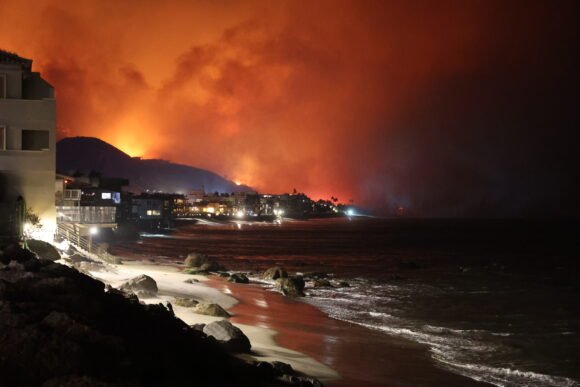
Total Insured Losses Near $7 Billion as Claims Surge Los Angeles Wildfires: Farmers Insurance estimates $600 million in losses from the Los Angeles wildfires that swept through the region in January 2024, adding to the growing financial toll on insurers. So far, insurance companies have paid out more than $6.9 billion to policyholders affected by the two most devastating wildfires in the area, according to the California Department of Insurance (CDI). Rising Claims and Widespread Damage As of the latest CDI data, insurers have received: Heavy Losses Across Major Insurers Several large insurers have reported losses exceeding $1 billion, including: Additionally, the California FAIR Plan, the state’s insurer of last resort, has already paid over $914 million in claims. This led to a $1 billion assessment request from the state insurance commissioner to help cover the financial burden. How Farmers Plans to Manage Losses Farmers clarified that its $600 million loss estimate excludes: The Farmers Exchanges, which include Farmers Insurance Exchange, Fire Insurance Exchange, and Truck Insurance Exchange, emphasize that their strong capital reserves and reinsurance strategies will help them navigate the financial impact. In a statement, Farmers reaffirmed its long-standing commitment to Southern California and its policyholders: “With deep roots in Southern California, the Farmers Exchanges remain dedicated to supporting the recovery process for all their customers, employees, and communities impacted by the devastating fires.” The company also reaffirmed plans to expand coverage options in California, despite the ongoing challenges in the state’s insurance market. Economic Toll Could Top $164 Billion Beyond insured losses, the total economic impact of the January wildfires could range between $95 billion and $164 billion, according to a report from UCLA. For more updates on insurance industry developments, visit JacobiJournal.com. Read the full California Department of Insurance report here.
Cal/OSHA Penalizes Plumbing Companies $529K for Trench Collapse Violations

Failure to Follow Safety Rules Led to Serious Worker Injury Cal/OSHA Penalizes Plumbing Companies: The California Division of Occupational Safety and Health (Cal/OSHA) has fined Smelly Mel’s Plumbing and Sewer Rat Plumbing a total of $529,640 for trench safety violations. The penalties follow an August 2024 trench collapse in San Mateo, which severely injured a construction worker. Investigation Reveals Multiple Safety Failures Cal/OSHA Penalizes Plumbing Companies: Cal/OSHA’s investigation found serious violations that put workers at high risk. As a result, inspectors issued eight citations to each company. Key violations included: Trench Safety Is Critical Trenching accidents can be deadly if safety measures are ignored. To prevent collapses, Cal/OSHA requires protective systems like trench boxes and shoring. Daily inspections are also mandatory to identify potential hazards. “Ignoring these safety requirements puts workers’ lives at risk,” a Cal/OSHA representative stated. “Employers must follow trench safety laws to prevent serious injuries and fatalities.” Stronger Enforcement for Workplace Safety California regulators are increasing safety enforcement to hold employers accountable. This case highlights the severe consequences of workplace negligence. For more updates on workplace safety, visit JacobiJournal.com. Read the official Cal/OSHA citation details here.
California Insurance Commissioner Blocks State Farm’s 22% Rate Hike Request
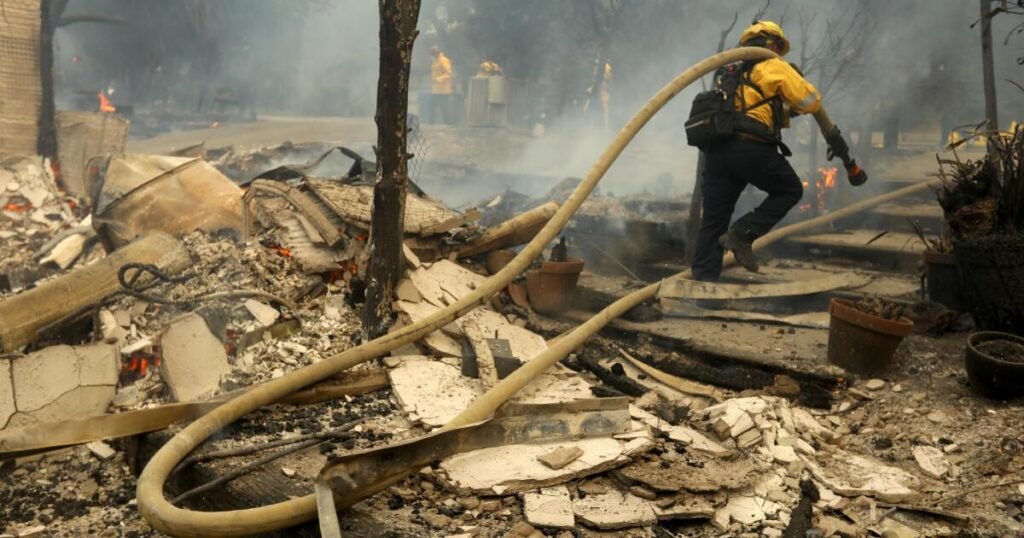
Decision Sparks Debate Over Wildfire Losses and Insurance Market Stability California Insurance Commissioner Ricardo Lara has denied State Farm’s request for an emergency 22% rate increase, instead calling for an in-person meeting to examine the insurer’s financial standing and the justification behind the proposed hikes. State Farm, the largest home insurer in California, had requested immediate approval for the increase, citing massive losses from the recent Los Angeles wildfires. As of February 14, the company reported 11,400 home and auto claims, paying out over $1.35 billion in wildfire-related damages. Commissioner Lara: State Farm Didn’t Justify the Request In a letter issued on February 16, Commissioner Lara wrote: “Under the strict review laid out by Proposition 103, the burden is on State Farm to show why this is needed now. State Farm has not met its burden.” Instead of granting approval, Lara scheduled a February 26 meeting with State Farm executives to discuss: State Farm responded with disappointment, stating: “We are very disappointed the Commissioner ignored his department’s recommendation to approve our request for interim rate increases… This decision sends a strong message about the challenges we face in collecting sufficient premiums moving forward.” State Farm’s Ongoing Struggles in California California Insurance Commissioner: Despite multiple approved rate hikes, State Farm halted new policy sales in California in May 2023, citing wildfire risks and regulatory challenges. The company has also non-renewed thousands of policies while warning of further market shifts. State Farm argues that its financial model is unsustainable in the state. According to the company, for every $1 collected in premiums, it has paid out $1.26, resulting in over $5 billion in underwriting losses over the past nine years. The rejected 22% rate increase would have applied to: Wildfire Damage: A Major Factor in Rising Rates Wildfire risks have forced many insurers to rethink their California presence. In the past decade, seven of the state’s ten most destructive wildfires have occurred, leading to escalating insurance claims. The Los Angeles-area wildfires, including the Palisades and Eaton fires, are expected to generate up to $40 billion in insured losses. The California Department of Insurance (CDI) reports that insurers have already paid out over $6.9 billion, with 33,717 claims filed for home, business, and living expenses. What’s Next for State Farm and California’s Insurance Market? State Farm warns that continued financial strain may force further action in California, including reducing coverage offerings. The insurer has also emphasized the need for reinsurance, stating: “State Farm General still insures high concentrations of risk in California that could generate financial losses multiple times larger than its available capital.” Meanwhile, Commissioner Lara has signaled that while he is open to discussions, insurers must comply with Proposition 103’s strict rate review process. With wildfire risks growing, insurers, regulators, and policymakers face urgent challenges in stabilizing California’s home insurance market. For the latest on California’s evolving insurance landscape, visit JacobiJournal.com. Read the full California Department of Insurance statement here.
California Greenlights FAIR Plan’s $1 Billion Assessment on Insurers for Wildfire Claims
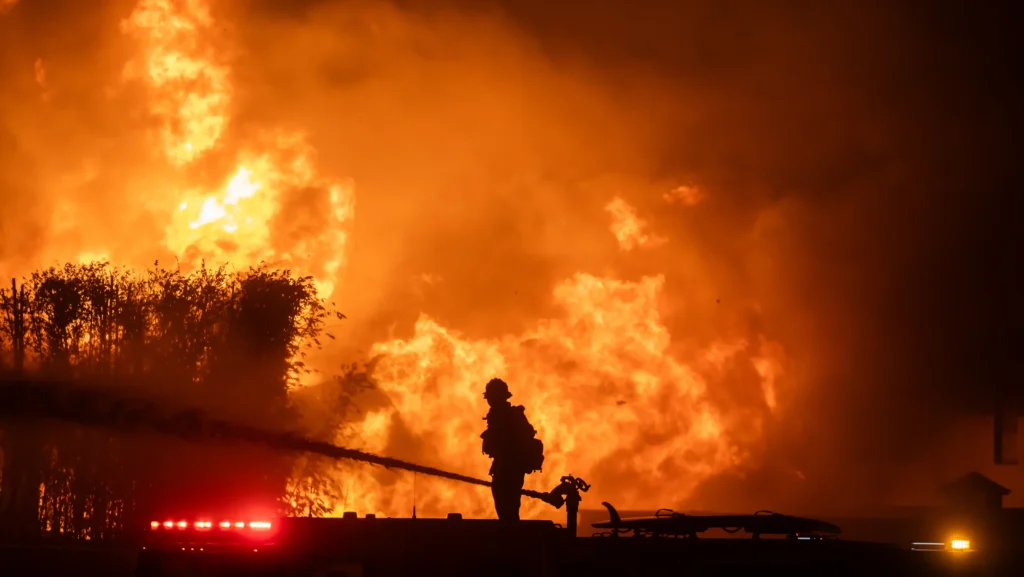
Decision Sparks Debate Over FAIR Plan’s Future and Industry Responsibility California Greenlights FAIR Plan’s : California Insurance Commissioner Ricardo Lara has approved the California FAIR Plan’s request to impose a $1 billion assessment on admitted market insurers to help cover Los Angeles wildfire claims. The FAIR Plan has already paid out over $914 million to policyholders, including advance payments for claims related to the Palisades and Eaton fires. Thousands of Wildfire Claims Filed As of February 11, policyholders have submitted: Losses vary, with 45% of claims classified as total losses, another 45% as partial losses, and 10% involving fair rental value, which covers lost rental income. Major Insurers Facing Billions in Losses Several large insurers are reporting significant financial setbacks. Why the $1 Billion Assessment? The FAIR Plan’s Accounting and Governing Committees recommended the assessment to access additional reinsurance layers and maintain operations. Commissioner Lara noted this is the first assessment of its kind in over 30 years. To help insurers offset the financial burden, Lara announced they can apply to recoup 50% of the assessment, provided their payment is not already reimbursed through reinsurance. The FAIR Plan has already utilized $350 million in reinsurance after meeting its $900 million deductible. It can access up to $5.78 billion in total reinsurance, but it must contribute $3.5 billion—including deductibles and co-pays—before reaching that limit. Industry and Consumer Reactions California Greenlights FAIR Plan’s : The American Property Casualty Insurance Association (APCIA) supports rebuilding the FAIR Plan’s reserves but urges the state to consider additional funding strategies. Mark Sektnan, APCIA’s Vice President for State Government Relations, emphasized: “To ensure long-term stability, California must explore alternative funding solutions—such as catastrophic bonds, credit lines, and other financial instruments—to fairly distribute risk and bolster the FAIR Plan’s resilience.” Meanwhile, Consumer Watchdog strongly opposes the assessment, calling it a “homeowner surcharge to bail out insurers.” Executive Director Carmen Balber criticized the move: “The FAIR Plan is struggling because insurers abandoned too many homeowners. Now, insurance companies are responsible for these losses, and consumers shouldn’t have to pay for the industry’s failures.” Consumer Watchdog is now considering legal action to challenge the assessment. The Road Ahead With wildfire risks increasing, California faces mounting pressure to reform its insurance market. The debate over funding the FAIR Plan highlights the ongoing struggle between insurers, regulators, and consumer advocates—a battle that will shape the future of home insurance in high-risk areas. For more updates on wildfire insurance, visit JacobiJournal.com. Read the full California FAIR Plan announcement here.
Insurers Pay Nearly $7 Billion for LA Wildfire Claims, Report Reveals
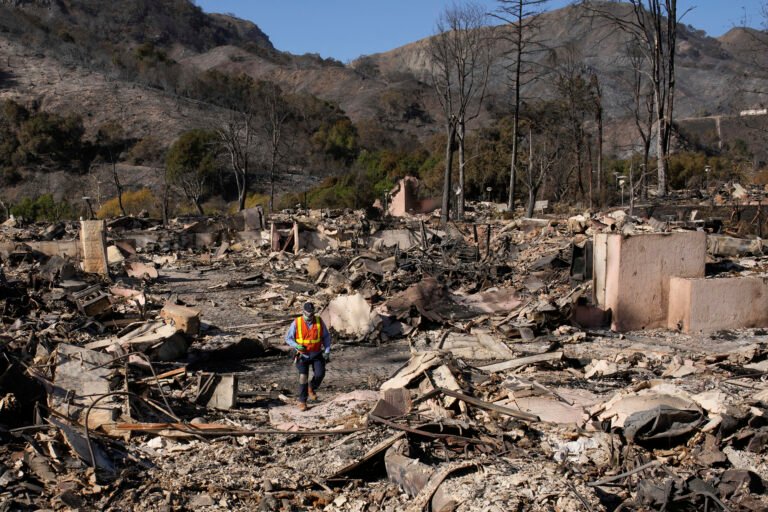
Rising Costs Highlight the Ongoing Financial Impact LA Wildfire Claims: Insurance companies have paid $6.9 billion for damages from two massive Los Angeles-area wildfires that tore through the region last month. The California Department of Insurance (CDI) released updated figures on February 13, reflecting a sharp rise from the $4.2 billion reported on January 30. Thousands of Claims Filed According to CDI, policyholders have submitted 33,717 claims for home, business, and disaster-related expenses. Additionally, 5,597 auto insurance claims total $73 million in payouts. Experts predict insured losses will climb, with estimates ranging between $8 billion and $40 billion. Major Insurers Report Heavy Losses LA Wildfire Claims: Several major carriers face substantial financial impacts. Mercury Insurance Group expects gross losses of $1.6 billion to $2.0 billion. However, subrogation and reinsurance recoveries may lower its final loss to $325 million or less. Travelers Companies Inc. projects $1.7 billion in wildfire losses, while USAA, Chubb, Allstate, and State Farm each report over $1 billion in claims. Meanwhile, the California FAIR Plan, the state’s last-resort insurer, has already paid $914 million to policyholders. It has now requested a $1 billion assessment from admitted market insurers to cover the claims. Total Economic Damage Could Reach $164 Billion Beyond insured losses, the total economic impact of the January wildfires is estimated between $95 billion and $164 billion, according to a UCLA report. The financial burden adds pressure to California’s struggling insurance market, which is already facing rising premiums and policy cancellations in wildfire-prone areas. For more wildfire insurance updates, visit JacobiJournal.com. Read the California Department of Insurance’s full report here.
California Food Distributor Pays $949,000 to Resolve Small-Business Contract Dispute
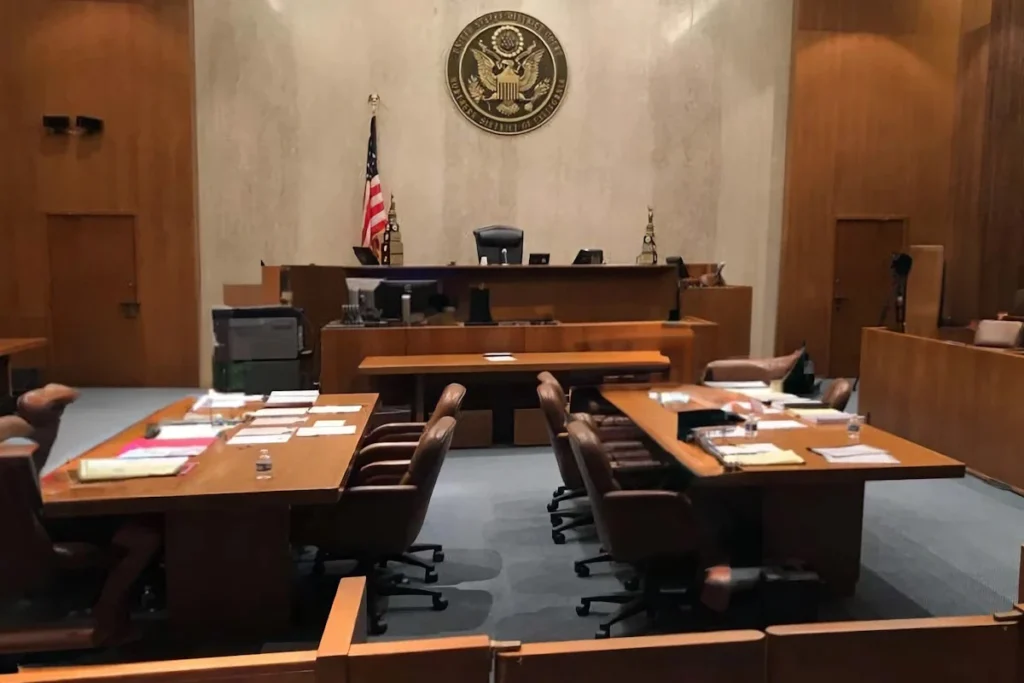
California Food Distributor: GS Foods Group Settles Allegations of False Claims Act Violations GS Foods Group Inc., based in Ontario, California, has agreed to pay $949,000 to settle allegations of contract violations under the False Claims Act. The company was accused of improperly obtaining federal contracts reserved for small businesses, despite not meeting eligibility requirements. Allegations and Contract Violations California Food Distributor: Authorities alleged that GS Foods and its subsidiaries, GoodSource Solutions Inc. and Dori Foods Inc., misrepresented their qualifications. Between October 1, 2018, and March 8, 2024, the companies secured contracts intended for small businesses. These contracts involved supplying food to facilities operated by the Federal Bureau of Prisons and U.S. Immigration and Customs Enforcement (ICE). Since GS Foods had affiliations with larger companies, it did not meet the criteria to bid on these contracts. Company Response and Compliance Measures GS Foods self-reported the issue to the Department of Justice’s Office of Inspector General (DOJ-OIG) and cooperated with the investigation. To address the concerns, the company took corrective actions, including: These steps aim to prevent future violations and ensure compliance with federal regulations. Settlement Details and Legal Implications The settlement resulted from a coordinated effort between the Justice Department’s Civil Division and DOJ-OIG’s Fraud Detection Office. While GS Foods agreed to pay the fine, no determination of liability was made. Contract fraud remains a significant issue, affecting small businesses that rely on fair access to government opportunities. This case highlights the importance of transparency in federal contracting. For more business and legal updates, visit JacobiJournal.com. Read the full report from the U.S. Department of Justice.
Cyber Insurance Market Poised for Growth Amid Evolving Threats: Gallagher Report

Cyber Insurance Market Poised: As cyber risks evolve, the cyber insurance market is set to expand, with stable rates and ample capacity expected in 2025. A recent Gallagher report highlights increasing competition among cyber insurance carriers, resulting in higher policy limits, enhanced risk management services, and more flexible insurance applications. Market Growth and Projections Gallagher’s 2025 Cyber Insurance Market Conditions Outlook reveals significant growth in the global cyber insurance market. Premiums have more than doubled over five years, reaching $14 billion in 2023, with projections of $29 billion by 2027. Cyber Insurance Market Poised John Farley, managing director of cyber at Gallagher, noted, “While we have reached a period of relative calm, the market faces storm clouds around current and emerging claims concerns.” Emerging Cyber Threats Cyber insurers are now focusing on new threats such as ransomware, social engineering losses, and attacks on supply chain providers. They are also preparing for losses from wrongful data collection and potential risks tied to generative artificial intelligence (AI). In 2024, data breach costs soared to an average of $4.9 million—a 10% increase from the previous year. Investment fraud, particularly involving cryptocurrency, surged, with losses climbing from $3.31 billion in 2022 to $4.57 billion in 2023. Cyber Insurance Adapts The dynamic cyber threat landscape demands innovative responses from insurers. They are developing new policy language and strategies to address supply chain, regulatory, wrongful data collection, and AI-related risks. Reinsurance continues to play a crucial role, offering new capacity and support through capital markets, insurance-linked securities, and catastrophe bonds. Despite these evolving threats, the cyber insurance market is expected to expand steadily in 2025, with the industry refining its strategies to mitigate risks effectively. For more insights and updates on the cyber insurance market, visit JacobiJournal.com. For the original report, see Gallagher’s 2025 Cyber Insurance Market Conditions Outlook.
Massachusetts High Court Affirms $20 Million Verdict in Leg Amputation Case

The Massachusetts Supreme Judicial Court has upheld a $20 million jury verdict in a medical malpractice case involving the above-the-knee amputation of a patient’s leg due to negligence by three medical professionals. Jury Finds Negligence in Treatment In 2023, a jury determined that a registered nurse, a physician assistant, and a nurse practitioner at Lowell General Hospital were negligent in their treatment of Steven Luppold, a 38-year-old man. Luppold had visited the hospital multiple times in 2015, complaining of foot, leg, and back pain. The jury concluded that the medical staff failed to diagnose and treat his blood clots properly, which ultimately led to his amputation. Appeal by Registered Nurse Among the three defendants found liable, only the registered nurse appealed the verdict. She contended that the trial judge made several errors during the trial. One significant point in her appeal was the trial judge’s decision to exclude cross-examination regarding a “high-low” settlement agreement entered into by the other two defendants. Leg Amputation Case A “high-low” agreement caps a defendant’s liability while guaranteeing the plaintiff a minimum payment, irrespective of the trial’s outcome. The nurse argued that this agreement influenced one defendant to alter his testimony to align more with the plaintiff’s claims and to criticize her actions. Court’s Rationale and Decision The high court emphasized that settlement agreements are generally inadmissible to avoid discouraging settlements and skewing jurors’ perceptions. The justices found no evidence that the other defendant’s testimony was influenced by the high-low agreement. Additionally, the registered nurse challenged parts of the jury instruction, the denial of her motion for judgment notwithstanding the verdict, and the assessment of prejudgment interest on future pain and suffering damages. However, the Supreme Judicial Court found no errors by the trial judge. Jury Instruction Clarification The court, while affirming the trial judge’s instructions, noted a minor adjustment to the model jury instructions on “but-for” causation for future cases. The revised language aims to clarify the meaning of causation for jurors more explicitly. The updated instruction reads: “If [defendant’s] negligence had an impact on [plaintiff’s] injuries (by causing them or worsening them), then it caused those injuries. But if the negligence had no impact on [plaintiff’s] injuries, meaning that the same harm would have happened anyway, then [defendant] did not cause the injuries.” This minor revision ensures jurors have a clearer understanding of the legal standard for causation in medical malpractice cases. For more updates on legal actions and regulatory news, visit Jacobi Journal. For more updates on legal actions and regulatory news, visit Jacobi Journal.
U.S. Chamber and Oil Firms Sue Vermont Over Climate Damage Law

A small tractor works to remove water from a business as floodwaters inundate a street in Barre, Vermont, on July 12, 2023. (Photo by Charles Krupa/AP) The U.S. Chamber of Commerce, along with the American Petroleum Institute (API), has filed a federal lawsuit against Vermont. They are challenging the state’s groundbreaking law that requires fossil fuel companies to contribute financially to the damage caused by climate change over the past several decades. Oil Firms Sue Vermont Legal Battle Over Vermont’s Groundbreaking Law The lawsuit, filed Monday, seeks to block Vermont from enforcing its new law passed in 2024. This law makes Vermont the first state to hold fossil fuel companies accountable for climate-related damages. It follows devastating summer floods and other extreme weather events linked to climate change. Vermont is currently assessing the cost of climate change impacts starting from January 1, 1995. The plaintiffs argue that the law infringes upon the U.S. Constitution. They claim that the federal Clean Air Act already regulates greenhouse gases. Additionally, they assert that the state law violates commerce clauses by targeting large energy companies outside Vermont. They believe it is unrealistic to measure the specific impact of emissions from individual companies over time, given the global nature of greenhouse gas emissions. Tara Morrissey, senior vice president of the U.S. Chamber’s litigation center, criticized the law. She stated, “Vermont wants to impose massive retroactive penalties going back 30 years for lawful, out-of-state conduct that was regulated by Congress under the Clean Air Act.” Morrissey warned that the penalties would increase costs for consumers in Vermont and across the country. Vermont Defends Its Position Although the lawsuit has been filed, Vermont’s Agency of Natural Resources has not yet been formally served. Anthony Iarrapino, a Vermont-based lobbyist with the Conservation Law Foundation, defended the law. He said the lawsuit represents the fossil fuel industry’s attempt to evade accountability for the damage their products caused. “More states are following Vermont’s lead in holding Big Oil accountable for disaster recovery and cleanup costs,” Iarrapino said. The U.S. Chamber of Commerce, along with the American Petroleum Institute (API), has filed a federal lawsuit against Vermont. They are challenging the state’s groundbreaking law that requires fossil fuel companies to contribute financially to the damage caused by climate change over the past several decades. Oil Firms Sue Vermont Under Vermont’s law, the state treasurer, in consultation with the Agency of Natural Resources, will release a report by January 15, 2026. The report will assess the total costs to Vermont from greenhouse gas emissions between 1995 and 2024. It will cover impacts on public health, agriculture, natural resources, and infrastructure. The law adopts a polluter-pays approach. It targets companies involved in the extraction or refining of fossil fuels responsible for over 1 billion metric tons of greenhouse gas emissions. Funds collected from these companies will be used to improve infrastructure and climate resilience, such as upgrading stormwater drainage, retrofitting buildings, and enhancing roads and bridges. A Growing Trend Among States Vermont’s law has inspired other states, including New York. Governor Kathy Hochul recently signed a similar bill into law. The New York law requires major greenhouse gas emitters to contribute to a state fund aimed at repairing and preventing future climate damage. This trend shows a growing movement among states to hold fossil fuel companies accountable for the financial costs of climate change. For more on Vermont’s legal battle and the broader impact of state climate policies, visit JacobiJournal.com. To read further details, check out the original article from Bloomberg.
OSHA Targets New Jersey Contractor with $328K Fine for Fall Hazards

Alleged Repeat Fall Hazards Found at Three Worksites The Occupational Safety and Health Administration (OSHA) has issued significant penalties to RRC Home Improvement Inc., a New Jersey-based contractor, for repeated safety violations. Inspections at three worksites in North Jersey revealed workers were allegedly exposed to dangerous fall hazards due to inadequate safety measures. OSHA Inspections Uncover Safety Violations OSHA first inspected an RRC Home Improvement worksite in Dover in June 2024 after reports surfaced of employees working on a roof without fall protection. Following a warning about this safety issue, OSHA initiated further inspections in July 2024 at two additional RRC worksites in Lodi. At these sites, inspectors once again observed employees without proper fall protection. In addition to fall-related hazards, the inspections revealed other violations, including: These findings highlight serious lapses in workplace safety protocols. Severe Penalties Issued for Violations New Jersey Contractor: After completing the three inspections, OSHA cited RRC Home Improvement for four willful and seven serious violations. These citations resulted in proposed penalties totaling $328,545. The company has a 15-business-day window to respond by complying, requesting an informal conference with OSHA’s area director, or contesting the findings before OSHA’s independent review commission. Repeat Offender Added to Severe Violators Program This is not the first time RRC Home Improvement has faced scrutiny from OSHA. Since 2017, the agency has conducted five inspections and issued citations for failing to provide adequate fall protection. Due to the willful nature of these offenses, OSHA has now added the company to its severe violators program. About RRC Home Improvement Inc. RRC Home Improvement provides commercial roofing, specialty roofing, and residential roofing services across New Jersey, New York, and Pennsylvania. Despite its regional presence, the company’s safety practices have repeatedly come under fire, underscoring the importance of strict compliance with federal workplace safety standards. Learn More About Workplace Safety To stay updated on workplace safety regulations and news, visit Jacobijournal.com, a trusted source for comprehensive legal and industry insights. For the full OSHA report on this case, visit the official OSHA website.